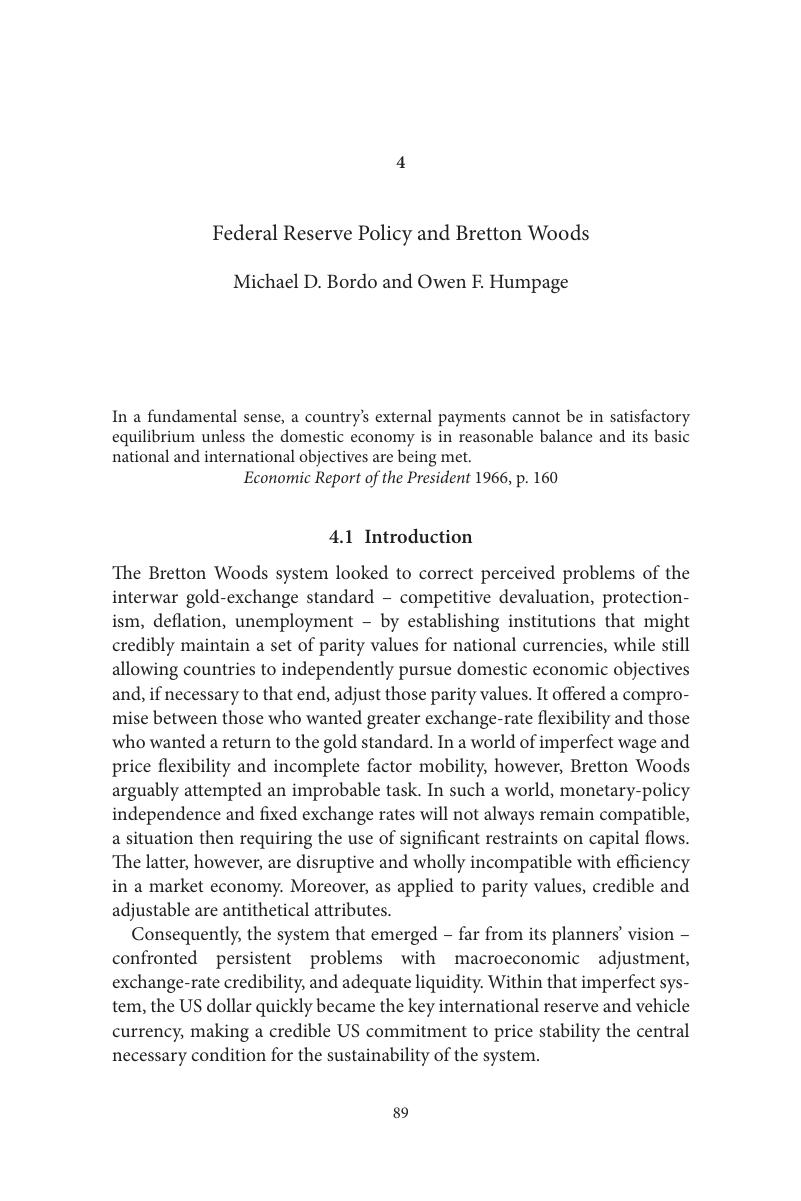Book contents
- The Federal Reserve’s Role in the Global Economy
- Studies in Macroeconomic History
- The Federal Reserve’s Role in the Global Economy
- Copyright page
- Contents
- Contributor Biographies
- Book part
- 1 Introduction
- 2 Doctrinal Determinants, Domestic and International, of Federal Reserve Policy 1914–1933
- 3 Navigating Constraints
- 4 Federal Reserve Policy and Bretton Woods
- 5 The Federal Reserve Engages the World (1970–2000)
- 6 The Federal Reserve in a Globalized World Economy
- 7 Unprecedented Actions
- 8 Panel Discussion on the Federal Reserve’s Role in International Financial Crises
- 9 The Robert V. Roosa Lecture
- Index
- References
4 - Federal Reserve Policy and Bretton Woods
Published online by Cambridge University Press: 05 March 2016
- The Federal Reserve’s Role in the Global Economy
- Studies in Macroeconomic History
- The Federal Reserve’s Role in the Global Economy
- Copyright page
- Contents
- Contributor Biographies
- Book part
- 1 Introduction
- 2 Doctrinal Determinants, Domestic and International, of Federal Reserve Policy 1914–1933
- 3 Navigating Constraints
- 4 Federal Reserve Policy and Bretton Woods
- 5 The Federal Reserve Engages the World (1970–2000)
- 6 The Federal Reserve in a Globalized World Economy
- 7 Unprecedented Actions
- 8 Panel Discussion on the Federal Reserve’s Role in International Financial Crises
- 9 The Robert V. Roosa Lecture
- Index
- References
Summary

- Type
- Chapter
- Information
- The Federal Reserve's Role in the Global EconomyA Historical Perspective, pp. 89 - 127Publisher: Cambridge University PressPrint publication year: 2016



